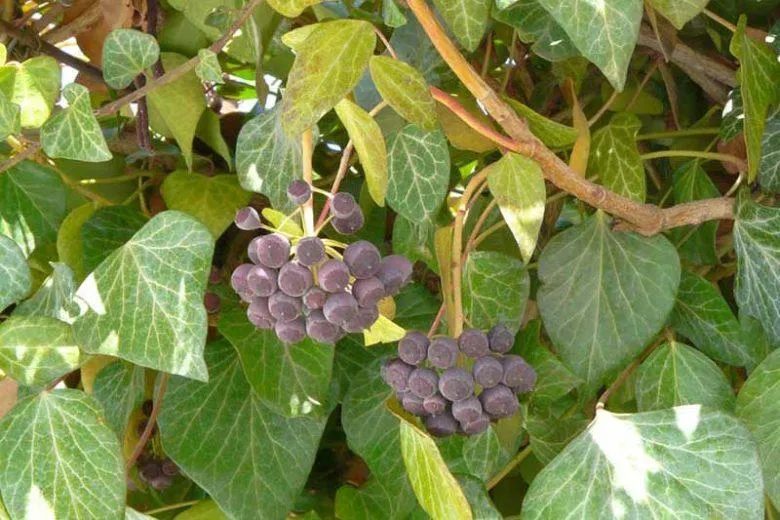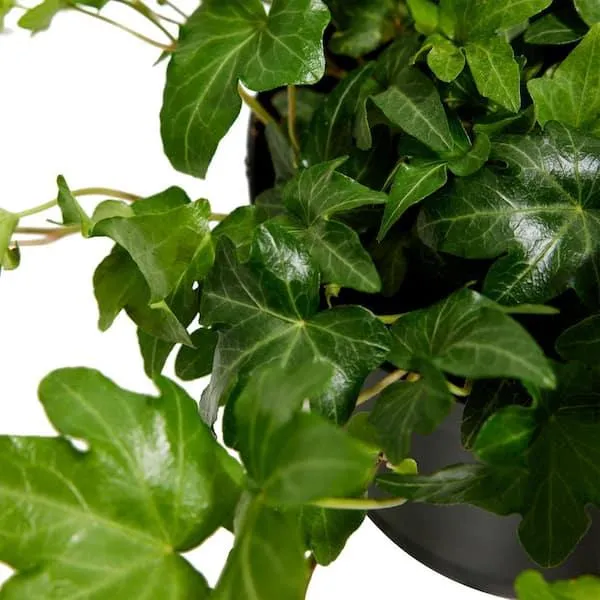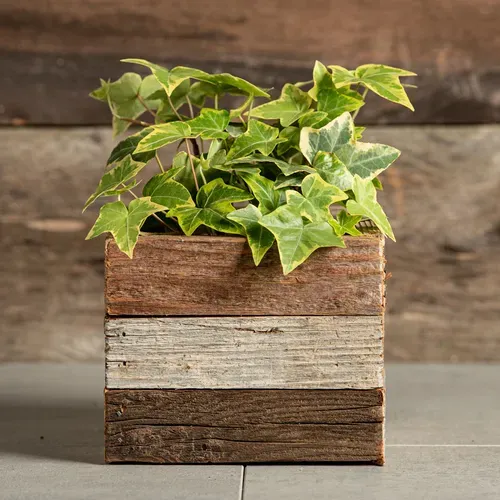A Comprehensive Guide to Caring for English Ivy (Hedera Helix)
English ivy, or Hedera helix, is a popular houseplant known for its beautiful green leaves and ability to trail or climb. With the right care, this hardy vine can thrive indoors for many years. However, improper care may lead to yellowing leaves, sparse growth, or other issues. In this guide, I will cover all the basics of caring for English ivy to help keep your plant healthy and happy.
Light Requirements
Light is crucial for ivy growth. English ivy prefers bright, indirect light. Direct sunlight, especially in the middle of the day, can cause leaf burn. However, it also needs enough light to thrive. Aim to situate your ivy in an east-, west-, or south-facing window where it will receive at least four to six hours of filtered sunlight daily. Move it slightly farther or closer to the window as needed based on how the leaves are responding.
Watering
The number one cause of ivy death is overwatering. The soil should be allowed to dry out partially between waterings. Feel the soil with your finger to check if the top inch is dry before watering. Avoid standing water in the saucer too. In winter when growth is slower, cut back water to about once every two weeks. Mist the leaves occasionally if growing conditions are very dry.
Soil and Potting
- English ivy prefers well-draining, acidic soil that is rich in organic matter. A potting mix specifically for houseplants or adding perlite or bark to regular potting soil works well.
- Repot annually in spring or when the roots start to grow out the drainage holes. Choose a container just 1-2 inches larger to allow for growth.
- Ivies can be propagated through stem cuttings. Take 5-6 inch cuttings in spring, remove lower leaves, and place in water until roots form before potting.
Fertilizing
During the main growing season from spring to fall, fertilize every 4-6 weeks with a diluted liquid houseplant fertilizer. Follow label instructions or use 1/4 to 1/2 the recommended strength. Too much fertilizer can potentially burn the roots. In winter with slower growth, fertilizing every 6-8 weeks or skipping it entirely is fine.

Temperature and Humidity
English ivy grows best at temperatures between 60-75°F. Drafty areas or near cold windows may cause leaf drop. Provide indirect humidity by grouping plants together or using a pebble tray. Mist leaves occasionally. Avoid cold drafts which can cause brown leaf tips.
Pruning and Training
Prune off any leggy or non-trailing growth to encourage a bushier plant habit. Use plant ties or bamboo stakes to train vines up or along surfaces. Ivy grows rapidly up poles or along the edges of walls and shelving. Prune off occasional brown leaf tips or entire leaves as needed. Cut back by 1/3 after flowering to redirect energy into new growth.
Pests and Disease
Watch for signs of pests like spider mites which cause stippling on leaves. Isolate the plant and spray leaves with water to dislodge pests. As a last resort, neem oil or insecticidal soap can treat infestations. Mealybugs sometimes affect ivy as well. Leaf spot or mildew can occur in low light or humidity – improve conditions and remove affected parts.
Overwintering and Dormancy
In winter, growth will slow down significantly. Reduce water and move the plant to a spot with lower light such as against an east-facing wall. Avoid temperatures below 55°F which can damage leaves. Prune off any parts that brown and remain moist but not soaked. Fertilize only lightly, if at all. New growth should resume in spring once temperatures get above 60°F again regularly.

Propagation
Take 6-inch stem cuttings in spring or early summer, remove lower leaves and place in water. Roots will form within 4-6 weeks. Pot up individual rooted cuttings in potting soil. Another method is layering – lay a section of vine along the soil surface and cover lightly with potting mix. It will root along the stem as it grows.
Plant Care Tips and Tricks
From my experience, ivy grows well in hanging baskets or draped over bookshelves and furniture. Moss poles also encourage twining growth habit. Putting the pot in a pebble tray helps boost humidity. Ivy makes an excellent gift plant that can live for decades with proper care. Judicious pruning helps control its size too.
In conclusion, English ivy is a versatile, low maintenance vine suitable for many home décor styles. Following the care instructions outlined here regarding light, water, soil, fertilizer and pruning will keep your ivy looking lush and healthy for years to come. Let me know if you have any other questions!
Hedera Helix Care Guide
| Light | Temperature | Water | Fertilizer | Pruning |
|---|---|---|---|---|
| Partial shade to full shade | 45-85°F | Let soil dry slightly between waterings | In spring and summer, use liquid fertilizer | Prune as needed in spring to shape plant |
| Filtered sunlight is best | Tolerates temperatures as low as 20°F | Water less in winter when growth slows | Too much fertilizer may harm plant | Remove old or damaged leaves throughout year |
| Avoid hot sun which may scorch leaves | Thrives in USDA hardiness zones 5-9 | Allow top inch of soil to dry before watering | A balanced, water-soluble fertilizer works well | Prune as needed to control size and shape |
| East or north-facing window is ideal | Sensitive to frost when young | Water thoroughly when soil is dry | Avoid granular fertilizers which may burn roots | Pinch back new growth to encourage bushiness |
FAQ
-
What lighting does a hedera helix need?
A hedera helix or English ivy basically likes a spot that gets bright, indirect sunlight for a couple hours each day. Putting it near an east or west window is usually good. Too much or too little light can harm it.

-
How often should I water my hedera helix?
You’ll want to water your English ivy when the top inch or two of soil becomes dry. Test the soil with your finger to check moisture levels. In warmer months, about once a week is typically fine. Although, maybe watering less often, like every 10 days, could work too depending on conditions.
-
What kind of soil is best for a hedera helix?
Most sources recommend using a soil specifically made for houseplants with your English ivy. These soils tend to be well-draining so the roots don’t sit in water. A potting mix or an all-purpose soil blended with perlite or sand works well. You want the soil to retain some moisture yet not become soggy kind of soil.
-
How can I encourage growth of my hedera helix?
To help your English ivy thrive, give it the right amounts of light, water, and fertilizer. You can also try pinching back new growth occasionally or repotting into a slightly larger pot if the roots start to fill the container. On the other hand, poorly drained soil or too much sun could hinder its growth. Following basic care tips and providing a suitable environment usually does the trick.
-
Does my hedera helix need fertilizer?
Most experts agree that fertilizing your English ivy periodically during the main growing seasons of spring and summer is a good idea. You can use a houseplant fertilizer following label directions. However, too much fertilizer may weaken a hedera helix rather than strengthen it. Maybe go easy and see how your ivy responds before upping the feeding frequency or strength.

-
Are there any pests that hurt my hedera helix?
The main pests to watch out for on English ivy include spider mites, scale insects, and mealybugs. Spider mites can potentially devastate plants by sucking sap from leaves. You may spot webbing or fine stippling. Treat with insecticidal soap or chemical pesticide if needed. Keeping foliage dry can help prevent issues. Ask your local garden store staff for the best organic or chemical solutions matched to specific pests in your area.
So in summary, provide your hedera helix with partial shade, regular water, well-draining soil, and occasional fertilizer. Monitor for spider mites and other pests periodically. With a bit of tender loving care, your English ivy should stay healthy for years to come! Let me know if any other questions come up.
